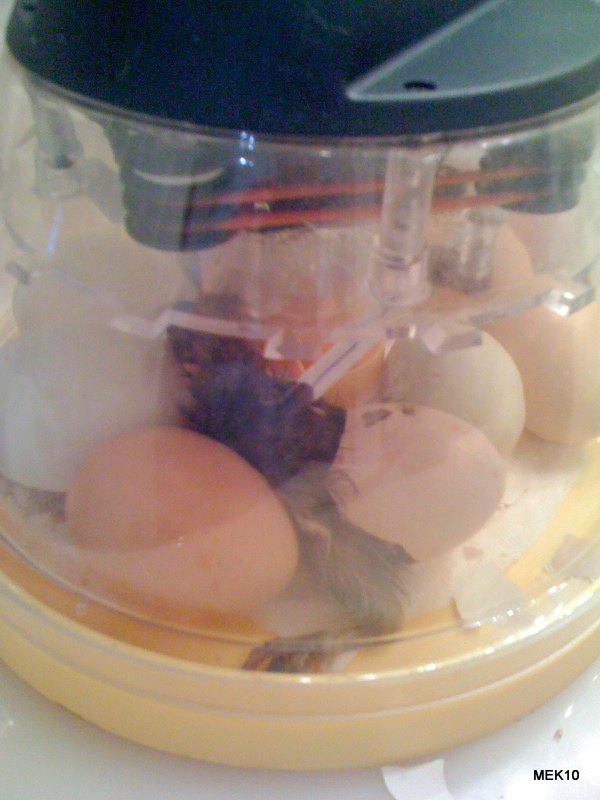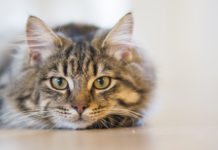This year has been one of weather extremes for much of the US. Here in the South East, we are accustomed to sticky, sweltering summers with either no rain or perhaps a hurricane or two. This past winter, however, was an experience my Southern blood was much too thin to handle! I recall more than one morning donning multiple layers of clothing, zipping up into a quilted one-piece suit, topping it off with two hats OVER my sweatshirt hood, two pairs of gloves (one for warmth, one water proof), and two pairs of socks under snow boots. Actually, the most remarkable thing about this ensemble is the snow boots as they are rare items of apparel here in central NC. No doubt they were some “mistake” ordered by my local store which is probably why they were in the clearance aisle in the middle of one of our coldest winters on record. Fast forward to this summer, a sticky and sweltering one as one might expect in these parts but living through over 80 straight days of 90-plus degree weather (again, a record) requires different farm attire all together. If you were to see me in person, you would have no idea I was born and raised in the South as my skin is about as far from tan as one could possibly be. Add to this an incredible sensitivity to mosquitoes and other biting insects and you have a person, while Southern through and through, should have probably grown up in Michigan (except they have bugs there, too, so I guess I’m doomed wherever I go!) So, out into the heat I go, donning retired yoga pants (black to reflect any sun), long-sleeved dress shirts handed down from my husband, long socks (gotta keep away those ticks), and a broad brimmed hat made with SPF 30 fabric. Oh, and don’t forget the dark sunglasses. As you have probably guessed by now, I have sensitive eyes, too.
I think it is safe to say that most of us who farm with livestock, whether it is in an urban or rural setting, give little thought to our own comfort during extreme weather but worry incessantly about our animals. Are they comfortable? Are they drinking enough water? Should I give them more/less bedding, more/less hay? The thought of our animals suffering unnecessarily is incomprehensible and, so, we don whatever ridiculous costume required to tend to their needs. The following are discoveries I have made through a life time of having the wonderful responsibility of caring for furry and feathers members of the family which, I hope will help you when extreme weather comes to your part of the world.
SUMMER CARE
Poultry– I am always impressed with how well my chickens handle our hot summers. Considering their normal body temperature of about 104 degrees, you’d think they’d be almost unable to handle summer at all. With a few precautions, they always seem to make it through without incident. Chickens will indicate when they are too warm by panting or open-mouth breathing and holding their wings away from their bodies. As always, ensure plenty of fresh cool water is available. Chickens cannot drink much at one time so need to drink frequently and can drain a waterer faster then you think on an especially hot day. In addition, try the following:
- Fans – my chickens sleep, rest, and generally hang out as desired in a stall in my barn which is outfitted with their roost and nesting boxes. A fan circulates the air drawing it from the open aisle door across the stall and out the window which is fitted with screen. This free flow of air has the added benefit of discouraging flies from making themselves at home.
- Electrolytes – In addition to plenty of water, you may consider adding poultry-appropriate electrolyte supplementation. Your local feed store or an Internet search should yield locations to purchase this product.
- Appropriate flock size – This cannot be overemphasized. I have known commercial factory chicken farmers who just consider it “normal” when they lose hundreds (no, not a typo) of their chickens anytime the thermometer goes above 90 degrees. The reason for this? Overcrowding. Again, if you consider the bird’s normal body temperature, you can imagine how hot they can get if housed in such a way that they can barely move. Please consider your local weather norms as part of your decision when determining flock size on your homestead.
- Multiple water stations – Chickens live according to a fairly strict hierarchy known, of course, as a pecking order. It is likely, particularly if you have one or more roosters in your flock, that some of your more docile birds may not get adequate access to water. Providing more than one waterer will ensure that all your birds can drink as often as needed.
- Kiddie pool and blocks of ice – This sounds funny but, during particulary scroching weather (100-plus), I have been concerned enough to provide my birds with a kiddie pool filled with blocks of ice made in 2 liter soda bottles. I’d like to say this effort was rewarded with my chickens gratefully settling themselves down with a big chicken sigh in this cool oasis but it was not to be. My chickens looked sideways at this curiosity, pecked at it a little, and walked away. Oh, well. Maybe your birds will think this is the greatest thing in the world and love you for your creativity. Or, maybe I should get some ducks.
Goats– Part of my success with keeping my goats comfortable in summer has much to do with selecting the appropriate breed for my climate. Gidget and Peanut (half sister and brother) are Nubians and their African ancestry seems to enable them to handle the heat well. Actually, they seem to revel in it as I often see them sun bathing in their yard just as I begin to wonder how many gallons of water a human can safely consume without having to use the bathroom or exploding. The basics of all good animal husbandry apply here as well such as plenty of fresh, cool water and a shady, well-ventilated house. I do not feed my goats concentrated food often as I am not currently milking Gidget but when I do, I add electrolytes and often wet their grain down just to give them one more opportunity to take in some moisture. I have not offered my goats a kiddie pool filled with ice but I have run a fan out to their pen on especially hot days. This tactic was greeted with a snort, a poke of the nose, and a retreat to the opposite side of the pen. I’m glad they feel well-equipped to handle the heat without a whole lot of help from me.
Horses – Our three horses, Maggie (an Arab), Parker (a Thoroughbred), and Zack (a Belgian Draft) seem to be the most appreciative of my efforts to keep them cool during the summer. This is not surprising when you consider that horses are most comfortable at temperatures around 75 or lower. Here in NC, that’s about 2 weeks out of the year (not really, but it often seems that way!) Water troughs filled to the brim with cool water is a must and I have often added ice to their water at lunch time. Electrolytes and mineral salt are standard additions to their grain as is wetting their meals. Ensuring your horses are drinking enough woud seem to be easy in hot weathe but if the water gets too warm to be palatable they may not drink enough. Low water intake can result in dehydration in any animal but has another possibly deadly consequence in horses, particularly as they age – impaction colic. Such things can happen with the best of intentions but are best avoided if at all possible. Cool baths in the afternoon are another good way to lower the body temperature. It is important to note that scraping the water off of their body with a sweat scraper is critical as the now-warm water needs to be removed to allow them to cool properly. Fans are installed outside the stalls keeping the air flowing and combating those pesky flies. The horses often stand with their faces right in front of the fans, their eyes half closed in an expression of bliss.
Cats– We cannot forget about another common farm inhabitant, the barn cat. Misha, a Russian Blue, came to us with an actual resume touting his mouse-catching abilities. I am able to verify this, unfortunately, as he is very proud when he has completed his job. I thank him (with eyes closed) as I know he is doing what he was intended to do. I just wish he could do it when I was not present. Don’t tell him, but I have been known to divert his attention just long enough to let his current prey escape. Misha pretty much takes care of himself as most barn cats are known to do. With the exception of not having a kitty door into our climate-controlled tack room, he comes and goes as he pleases often choosing where he spends his time based on the weather. Cats are notoriously poor water drinkers having evolved from the big cats in the desert. One solution, in addition to providing water so they can drink as desired, is to feed them wet food. This has never appealed to Misha so dry food is what fills his bowl. I don’t even want to think about the moisture content of mice.
We also live with four dogs who are vital to our happiness and success on the farm. I chose not to include them for the purposes of this post as they do live primarliy in the house joining me for farm chores as much as the weather permits.
Next post, I will attempt to help you prepare your animals for the upcoming winter. Lets hope it’s an easier season for all of us!












Great article and I agree – it’s all about the comfort of critters. Thanks for sharing!
You’re frozen water bottle idea works great for rabbits. We had about 2 weeks of over 100 degree weather here, and putting frozen 2 liter bottles in with the rabbits helped to keep them cool.
I can imagine with all that fluffy hair your bunnies would get pretty uncomfortable. Thanks for the comment!
Such great tips and so funny too. i love your sense of humor and sharing your ideas that were greeted with odd looks from the animals and not grateful ones
Loved the article. Read it twice and will definately be using the tips when the animals start coming. And… you’re funny! Keep it coming. TY
Thanks so much for your kind comments! I’m glad to know I’m funny. Living with these wonderful creatures certainly brings out your sense of humor and is MUCH cheaper than a psychiatrist.
Such a fun post. Can’t wait to see more of your writings and what you do with goats and their sad, sad, sad eyes that make you feel soooo guilty when it’s raining!
My goats loved to go to the center of a banana circle we had. It was well shaded, had excellent air circulation, and usually, a good breeze. The center was thickly mulched – very thickly, and watered well several times a week (in the center,which is where they chose to rest.) Ther were several buckets staked firmly under the trees, which were kept filled with fresh water, and a salt/mineral pan just outside (so spilled salt wouldn’t bother the bananas). The only grain they got was on the milking stand, or in the barn, after being secured for the night.